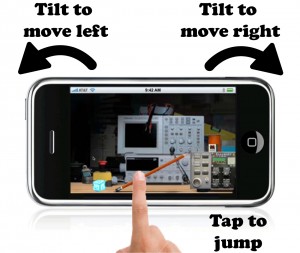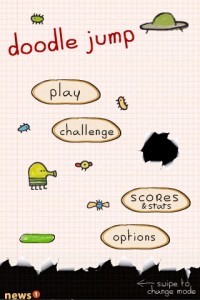
by Annie | Feb 6, 2012 | Education, Game Design
As a teacher, I used a lot of games in the classroom. However, it wasn’t until I left the classroom that I realized the untapped potential of existing games in transforming the educational landscape. Most people are starting to come to terms with the effectiveness of games in teaching. However, educators often overlook popular titles in favor of “educational games.” Though these educational games are certainly a step up from textbooks, they often fail to create a truly captivating experience. Thus, the dilemma. Educators know that games can engage students, but even the best educational games out there can’t compare to Angry Birds and Call of Duty. Oh dear, what to do? The answer is closer than you think. In fact, it’s staring you in the face. Instead of trying to create educational games like Angry Birds, why not just use Angry Birds itself? Every game has the potential to be a powerful educational tool. Don’t believe me? Here are some examples: Fruit Ninja: Line Graphs Have students use line graphs to determine the value of different combos in the game. Angry Birds: Perspective Have students think about the conflict between the birds and the pigs from the pigs’ perspective. Paper Toss: Wind Speed Have students analyze the trajectory of the ball and build an apparatus to measure wind speed. Doodle Jump: Ratios and Scale Have students put themselves in the game by measuring jump height and designing a level to scale. Canabalt: Parallax Effect Have students analyze the parallax effect in the background of the game, the principles of which are used by astronomers to measure far away...
![Double Helix]()
by Annie | Nov 29, 2010 | Game Design
What could be more fun than rhythm platforming on DNA strands? That’s the main premise behind my latest game concept, Double Helix. Double Helix is a run-forever rhythm platform game for iOS devices that combines the principles of real world DNA replication with the challenges of quick decision-making. In Double Helix, you play as Junior, a nanobot moving at a certain pace along an unwinding DNA double helix and replicating sequences of DNA to a certain beat. As the double helix unwinds, targets appear indicating missing nucleotides. Using clues in the sequence, you must find the correct nucleotide for each missing spot while staying on the beat. As it turns out, it takes a lot of minute details and tuning to create a game. Even for this deceptively simple game, the breakdown of individual game mechanics within my detailed design document has grown to well over half a dozen pages. Throw in descriptions of characters, enemies, features, controls, camera, and screen mockups, and you’ve got quite a large document on your hands. Here are some initial menu screen mockups for Double...

by Annie | Sep 21, 2010 | Game Design
Introducing my latest game concept, H2OMG: H2OMG is a photorealistic physics-based puzzle game in which you play as the various states of water, using different temperature zones to change between solid, liquid, and gas in an effort to gain as much mass as possible by colliding with other H2O molecules while in the liquid state. As steam, you play in first person, flying around in any direction, but you risk losing mass as your molecules separate. As water, you play in third person on a 2D plane, but while your movement may be limited, this is the only state in which you can gain mass. As ice, you play in third person in a 3D platforming environment, jumping around while maintaining mass. You must utilize the different states of matter in tandem to help you increase your mass as much as possible while navigating toward each level’s finish line collection beaker. With real world applications and simple mechanics, this game is guaranteed to have you saying...

by Annie | Sep 13, 2010 | Game Design
What’s inside you, on every surface you touch, in the air you breathe, and an integral part of every living thing around you? Why bacteria, of course, and in my latest game idea Culture Shock, you will have the chance to get up close and personal with the ubiquitous microorganisms. Culture Shock is a casual first person shooter game in which you play as a scientist racing against time to zap mutant bacteria in a petri dish. Similar to a sniper searching for a certain target, you must watch the colony carefully and patiently as the bacteria reproduce, finding and shooting the bacteria that differ from the majority. At first, mutants are easy to spot, as they display variations through obvious external traits, such as color, size, and shape. However, as their antibiotic resistance increases, mutants become harder to find as they start to blend in with their peers. You must protect your bacterial culture, finding and zapping all the mutants while saving enough good bacteria to ensure the survival of the colony. Microscopic battles. Macroscopic...

by Annie | Aug 30, 2010 | Game Design
It seems that I’m a bit late to the Doodle Jump boat, but I’m no less addicted. Like the millions of Doodle Jump fans around the world, I’ve logged countless hours guiding Doodle up an endless path of platforms, dodging alien monsters and hoping for boosts from rockets and propeller hats. Doodle Jump advertises itself as “Doodle Jump – BE WARNED: Insanely Addictive!” and does not fail to deliver. But why? How can something so simple be so addicting to so many people? For those of you who aren’t familiar with Doodle Jump, it’s a platform game created by Lima Sky that was released worldwide in April of 2009. By June of 2010, the game had already sold over 5 million copies, continuing to generate nearly 30,000 downloads a day. At this point, you might be thinking that the game must be epic. Dozens of levels, tons of tough enemies, tricky puzzles, customization galore. But you’d be wrong. Gameplay consists of guiding a green four-legged creature up an endless array of platforms without falling. The higher Doodle gets, the higher your score. That’s it. So back to my original question. Why is that fun? And more importantly, why is that repeatedly fun? Such a simple and repetitive action could get boring fast, but this game is different. There seem to be a lot of hidden factors that make Doodle Jump the runaway success that it is. Here are my takes on why the game is so fun: 1. Doodle Jump is easy to learn. Learning how to play Doodle Jump takes less than 5 seconds. Doodle’s movement up the...





